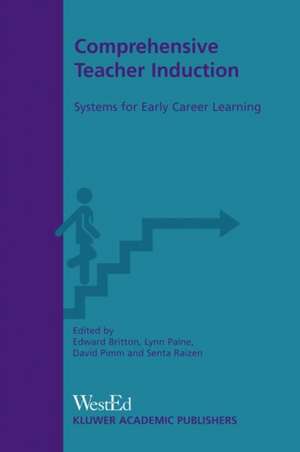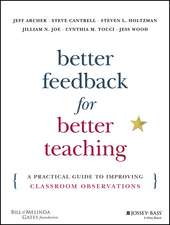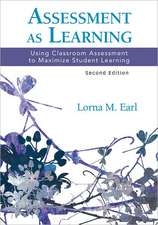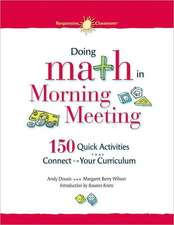Comprehensive Teacher Induction: Systems for Early Career Learning
Autor E.D. Britton, L. Paine, S. Raizenen Limba Engleză Paperback – 30 iun 2003
Preț: 395.25 lei
Nou
Puncte Express: 593
Preț estimativ în valută:
75.64€ • 82.13$ • 63.54£
75.64€ • 82.13$ • 63.54£
Carte tipărită la comandă
Livrare economică 22 aprilie-06 mai
Preluare comenzi: 021 569.72.76
Specificații
ISBN-13: 9781402011481
ISBN-10: 1402011482
Pagini: 420
Ilustrații: XIV, 404 p.
Dimensiuni: 155 x 235 x 22 mm
Greutate: 0.59 kg
Ediția:Softcover reprint of the original 1st ed. 2003
Editura: SPRINGER NETHERLANDS
Colecția Springer
Locul publicării:Dordrecht, Netherlands
ISBN-10: 1402011482
Pagini: 420
Ilustrații: XIV, 404 p.
Dimensiuni: 155 x 235 x 22 mm
Greutate: 0.59 kg
Ediția:Softcover reprint of the original 1st ed. 2003
Editura: SPRINGER NETHERLANDS
Colecția Springer
Locul publicării:Dordrecht, Netherlands
Public țintă
ResearchCuprins
1: Introduction.- 1. Case studies within countries.- 2. Case-study methods.- 3. Book conventions and organization.- 4. Some opening thoughts.- 2: Entering a Culture of Teaching.- 1. Starting up: induction through the eyes of Teacher Li Mei.- 2. Exploring Shanghai as a system for teacher induction.- 3. Experiences that guide the beginner: induction as a varied process supporting core goals.- 4. Acquiring the wisdom of practice: learning with and through curriculum materials.- 5. Talk as a medium for induction: immersion in public conversation about and scrutiny of teaching.- 6. Multiple stakeholders supporting common goals: building variation into a system.- 7. Conclusion.- 3: Co-operation, Counseling and Reflective Practice.- 1. Supporting the first two years of teaching.- 2. The general study context.- 3. Teacher education.- 4. Who is a beginning teacher? The job market for teachers.- 5. Responsibilities of middle-school teachers.- 6. Swiss induction: individual and professional growth go together.- 7. The training of counselors and mentors: not just experienced teachers.- 8. Research and evaluation: making a system reflective.- 9. A summary of main induction features.- 4: Help in Every Direction.- 1. Introduction.- 2. The national context for local teacher induction.- 3. Expectations and resources for teaching the science curriculum.- 4. Diverse support providers: a repertoire of support activities.- 5. Enabling factors supporting induction within the culture of the educational system.- 6. A summary of New Zealand’s main induction features.- 5: Being and Becoming a Mathematics Teacher.- 1. ‘One foot in the classroom’: a week in the life of a stagiaire teacher.- 2. A brief interlude on two key terms.- 3. Some observations about the system of national education inFrance.- 4. How to become a mathematics teacher.- 5. Settings and occasions for stagiaire learning.- 6. Some specific elements of the mathematics teaching terrain.- 7. Looking more generally.- 8. What is valued by the system.- 6: Guiding the New Teacher.- 1. Yoko Matsubara’s first year.- 2. An overview of Japan’s educational system.- 3. Pre-service teacher preparation in Japan.- 4. Becoming a teacher.- 5. Characteristics of today’s beginning teacher induction training program.- 6. Program evaluation and the politics of induction.- 7. Concluding remarks.- 7: Making Sense of Induction.- 1. Why induction?.- 2. Whom does induction serve? Who is (or gets to be) a new teacher?.- 3. What is induction? What is the ‘curriculum of induction’?.- 4. Who provides the needed knowledge and activities? Whose knowledge is it? Where does it reside?.- 5. Induction as complex systems: articulation and co-ordination.- 6. Some concluding thoughts.
Caracteristici
Includes supplementary material: sn.pub/extras







